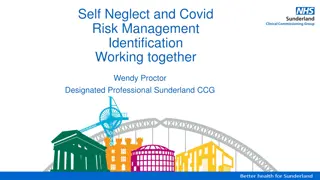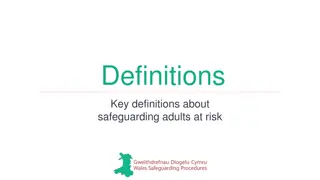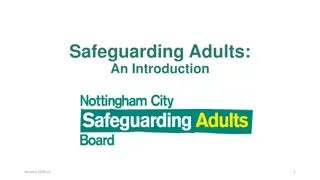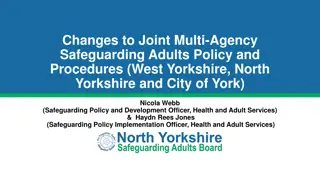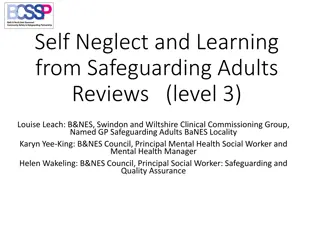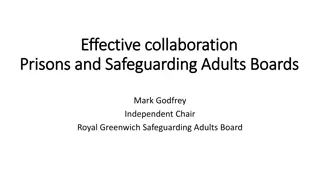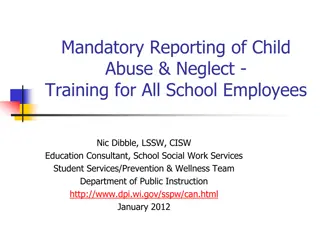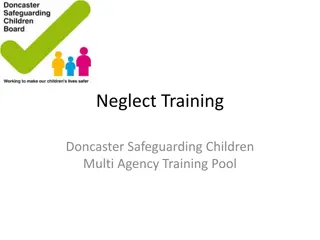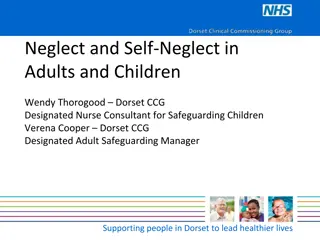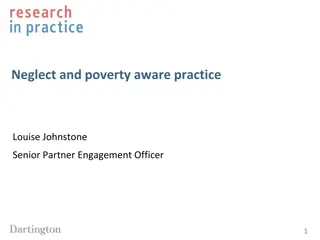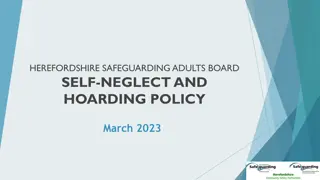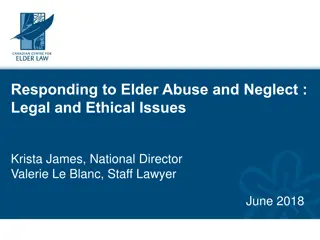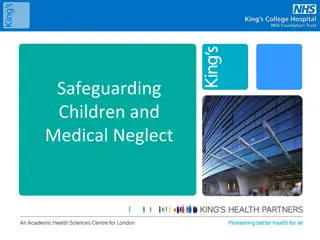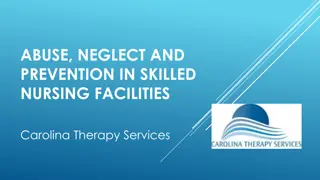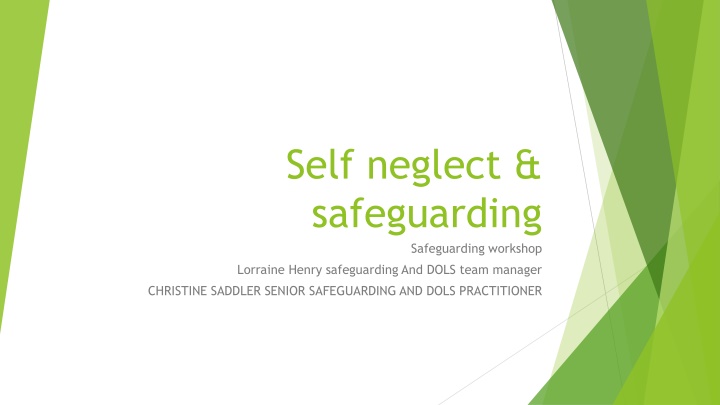
Self-Neglect and Safeguarding in Social Work Practice
Explore the complex concept of self-neglect, its definitions, and how it aligns with the Care Act. Discover the interventions, decision-making processes, and case-by-case approach necessary in safeguarding vulnerable individuals.
Download Presentation

Please find below an Image/Link to download the presentation.
The content on the website is provided AS IS for your information and personal use only. It may not be sold, licensed, or shared on other websites without obtaining consent from the author. If you encounter any issues during the download, it is possible that the publisher has removed the file from their server.
You are allowed to download the files provided on this website for personal or commercial use, subject to the condition that they are used lawfully. All files are the property of their respective owners.
The content on the website is provided AS IS for your information and personal use only. It may not be sold, licensed, or shared on other websites without obtaining consent from the author.
E N D
Presentation Transcript
Self neglect & safeguarding Safeguarding workshop Lorraine Henry safeguarding And DOLS team manager CHRISTINE SADDLER SENIOR SAFEGUARDING AND DOLS PRACTITIONER
What is your understanding of Self- neglect ??
Objectives of the workshop To look at the definitions of self- neglect How self- neglect fits into the Care Act Tensions with the care act & the reality of social work the heart of the matter Capacity vs lack of capacity Any questions
Definitions of self-neglect There is no single operational definition of self-neglect, however the care act makes it clear that it comes within the statutory definition of abuse or neglect if the individual concerned has care & support needs and is unable to protect themselves from neglect. The DOH (2016) defines it as a wide range of behaviours neglecting to care for one s personal hygiene health or surroundings and include behaviours such as hoarding. Skills for Care include three distinct areas that are characteristic of self-neglect
Definitions of self-neglect Lack of self care this includes neglect of one s personal hygiene, nutrition and hydration, or health, to an extent that may endanger safety or well- being; Lack of care of one s environment- this includes situations that may lead to domestic squalor or elevated levels of risks in the domestic environment(e.g., health or fire caused by hoarding); Refusal of assistance that might alleviate these issues. This might include, environment or of health assessments or interventions, even if previously agreed, which could potentially improve self- care or one s environment.
Definitions of self neglect The concept of self- neglect is complex with contrasting definitions. Decision making is a key pivot upon which professional responses to self- neglect turn. Interventions in self neglect requires careful exploration in the context of the principles of personalisation, choice, control & empowerment that underpin policy in adult social care and safeguarding. It should be noted that not all cases of self-neglect prompt a s42 enquiry and a case by case approach should be adopted.
How self-neglect fits in to the care act? The care act guidance offers a clearer framework for working with self neglect recognising the benefits of social work involvement where serious of harm is identified. How? The care act gives the multi-agency framework 14.12 (care act guidance) Creates strong multi-agency partnerships that provide timely & effective prevention of and responses to abuse or neglect.
Care Act guidance Where serious risk is identified it is likely that input will be required from the fire service, environmental health, police and landlords. There is a shared view that where there is considerable risk the safeguarding framework is best approach to be adopted due to it links with partner agencies.
Practitioners remember this!! The care act guidance states that any concerns about self neglect do not override the principle set out in s1 of the act, that any restriction on an individuals rights should be kept to the minimum necessary A decision on whether a response is required under safeguarding should be made on a case by case basis and will depend on the individuals ability to protect themselves by controlling their own behaviour.
Tensions with the care Act &the reality of social work What are they? In your groups please discuss your experiences of working with individuals who you consider to be self- Neglecting & how the framework conflicts with the reality of case management.
The heart of the matter Housing Thresholds SocialWorker Other agencies Police LFB Family GP
Capacity In july 2017, a report called learning from sars: a report for the london safeguarding adults board was published. It found that of the 27 reports that it analysed across london that in 21 mca was commented on. It found that the biggest concern noted was missing or poorly performed capacity assessments. It found that there was insufficient scepticism and respectful challenge of decision making and possible consequences, and in some cases the absence of best interest decision making.
Capacity In your groups please discuss what you think is essential when completing a capacity assessment in self neglect cases? WHAT do you need to consider What types of questions would you need to ask? In what circumstances wouldn t you complete an MCA despite the person being at high risk of self-neglect. Take 10 mins to discuss.
References Scie self neglect at a glance The mental capacity Act 2005 Overcoming challenges in Mental Capacity Act 2005 Community care SCIe Sars Library for further reading refer to Bristol SAB in the case of Mr C.



